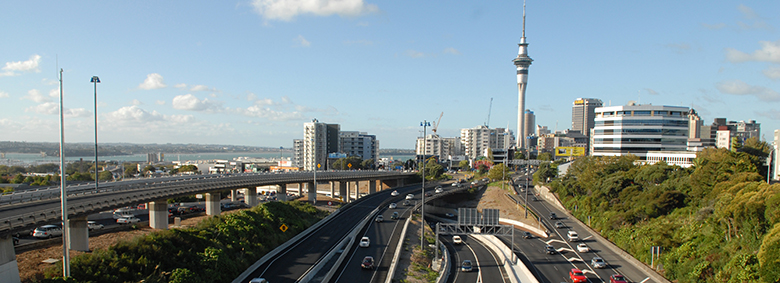A major piece in the HPMV jigsaw has been completed this month.

A key link in New Zealand’s High Productivity Freight Network has been completed with the conclusion of bridge-strengthening work of the Kopurererua Stream Bridge on State Highway 29, just outside of Tauranga, opening up the route to high productivity motor vehicles (HPMVs).
This means freight operators can now shift more goods in fewer trips, helping to lift productivity and reduce congestion across the Upper North Island.
More than half of New Zealand’s freight total load is transported around the Upper North Island, with the volume expected to increase by 50 per cent nationally over the next 25 years as the country’s economy expands. Freight volumes in the top half of New Zealand may increase even more than this with Auckland freight volumes alone estimated to grow by around 70%.
This is why completely opening the entire strategic freight network in the Upper North Island is a major step in the Transport Agency’s key strategic priority of moving more freight on fewer trucks says Freight Portfolio Director Harry Wilson.
“This is a significant milestone in our programme of creating a High Productivity Freight Network, allowing us to get the maximum benefit from our road infrastructure to support New Zealand’s economic growth.”
“In simple terms, HPMVs undertake 10-20 percent less trips to move the same amount of freight as standard trucks. Moving more freight using fewer trucks is good for everyone, from the freight operators to other road users, and local communities,” Mr Wilson said.
The Transport Agency’s focus is on making New Zealand’s freight system both safer and more efficient. Improving safety while reducing the cost of doing business will make New Zealand a better place to live and work. Reducing the cost of moving freight will help improve the competitiveness of our exports, reduce the costs of the goods we buy, and grow our economy.
HPMV must meet higher safety standards, and there are also other significant safety benefits - from the reduced crash risk that fewer truck trips provide to bringing newer, safer truck combinations onto our roads. The approach to reducing the number of truck trips is part of the Transport Agency’s wider work with our partners on implementing Safer Journeys. This includes work on safer speeds, better roads and roadsides, and smarter enforcement of road rules for trucks. As a result of this there is a declining trend in the number of truck crashes involving death and serious injuries, even though the number of truck trips over all is increasing.
The Transport Agency has already approved more than 2,000 kilometres of HPMV routes across New Zealand’s state highway network and continues to assess and upgrade new routes to extend the network.